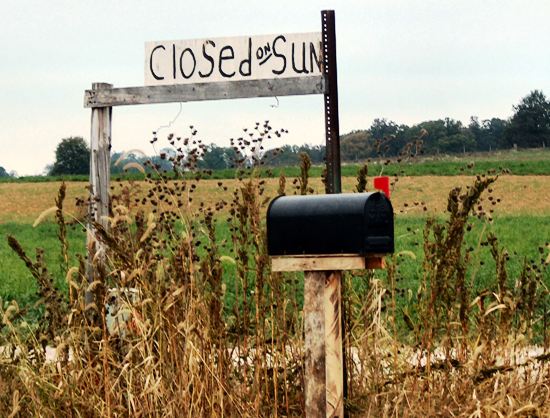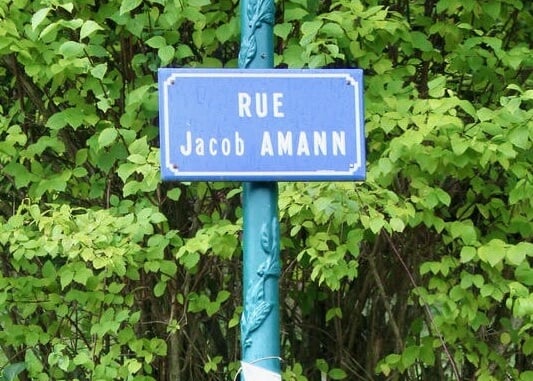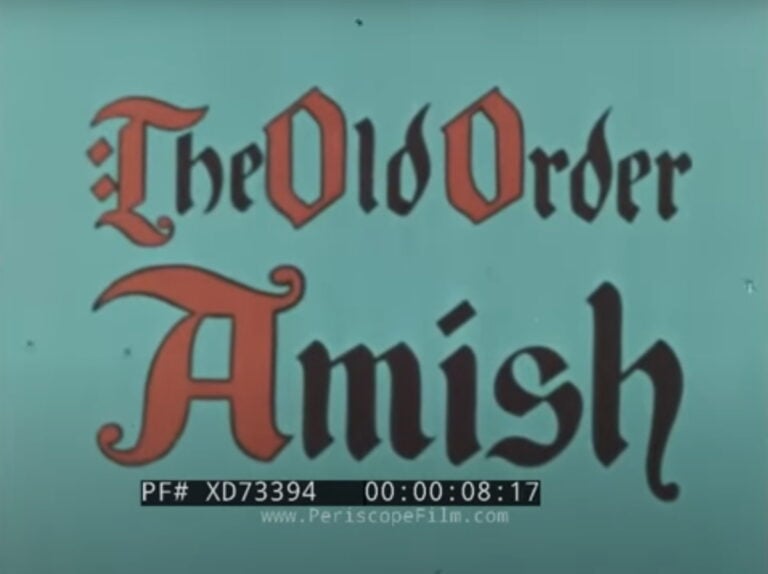The First Amish Settlement in Canada
In February we had a look at the first Amish settlement in North America, located at Northkill in Pennsylvania’s Berks County (founded approximately 1740).
I recently came across an interesting Ontario historical blog with a photo of a plaque marking the location of the first Amish settlement in Canada, which came about some 80+ years after Northkill.

Here’s the text from the plaque:
THE FIRST AMISH SETTLEMENT
In 1822 Christian Nafziger, an Amish Mennonite from Munich, Germany, came to Upper Canada to find land on which to settle some 70 German families. With the assistance of a group of Mennonites headed by Jacob Erb, who had settled nearby, a petition was made to the government for land here in present-day Wilmot Township. Surveyed two years later by John Goessman, this “German Block” was peopled primarily by Amish from Europe. In 1824-25 Bishop John Stoltzfus of Pennsylvania organized the first congregation and ordained as ministers John Brenneman and Joseph Goldschmidt. Services were held in the homes of members until 1884 when a simple frame meeting house, which served until 1946, was erected near this site.
Erected by the Ontario Heritage Foundation, Ministry of Culture and Recreation
The plaque location is given as follows:
The Region of Waterloo
The Township of Wilmot
In Baden, at the southeast corner of
Snyder’s Road West and Nafziger Road
The oldest Amish settlement in Canada today is the Milverton community. Is this the same community as commemorated on the plaque?
Though founded at about the same time, it’s unclear to me if this is the same settlement that has led to the present-day Milverton Amish settlement.
The town of Milverton lies about 20 miles to the northwest of this historical plaque; the current Milverton congregations are located mainly to the north of the town itself.
At the 2016 fall meeting of the Mennonite Historical Society of Ontario, Fred Lichti gave some history of the area’s Anabaptist settlers:
When the Amish first came from Europe to Waterloo Region in 1823, they settled west of Kitchener and then spread from there. By 1874 they were moving into Mornington Township, where Milverton is located. When some Amish began building meetinghouses in the 1880s, the Amish of the Milverton area did not all agree, resulting in a split. The progressives built meetinghouses and eventually referred to themselves as “Mennonite,” while the traditionalists are the people we now refer to as “Amish.”
So it’s possible this is the same community, and today’s Amish at Milverton are descendants of the traditionalist side of the split who migrated in the direction of Milverton (this would be my guess).
Or perhaps this plaque commemorates a separate settlement from current-day Milverton altogether, founded at about the same time. I haven’t been able to find a definitive source on this point.
Today’s Milverton Amish Community
While we’re on the subject, Milverton is not only Canada’s oldest, but also its largest Amish community, at 12 congregations in size. Here’s more from Lichti’s talk on the Milverton Amish:
These Amish in the Milverton area have continued to worship in homes on Sunday mornings. They had little growth for nearly 100 years, but since the 1980s and 90s they have grown rapidly, and their population has doubled since 1999. The Milverton Amish tend to have more traditional dress than many other Amish communities. They also do not use covered buggies, and their buggy wheels have steel rims. According to Lichti, common surnames in the Milverton area are Kuepfer, Albrecht, Jantzi and Streicher, names that are not common in other Amish communities.

Another observer of the Milverton Amish, retired Amish Mennonite pastor Glenn Zehr added the following, about the changes he’s seen in the group.
One interesting thing is that they hire outsiders to do custom farm work with equipment not normally used by Amish:
In times past the Amish did all their field work with horses, but today it is not uncommon to see large equipment in those fields, hired to do custom planting and harvesting. Although the Milverton Amish do not own cars or tractors, some building contractors own trucks that are driven by their non-Amish employees. Zehr said he wouldn’t be surprised if they change their position so that tractors are allowed within the next ten years or so, since they are hiring so many custom operators to do the work in the fields.
Phone usage has been evolving:
Since the 1990s, telephones have come to the Milverton Amish, but not in the houses. Little telephone booths are near the end of the lane or at least some distance from the house. They usually have some type of message system since there is rarely anyone available to answer the phone directly. Zehr also thinks that there are some cell phones or maybe even smart phones used by the Amish, but probably they are not carried openly since officially there is no approval for this practice. He assumes their position on cell phones is changing.
As have travel customs:
Another change in more recent years is the amount of travel done by the Amish. In earlier years Amish families would only hire a driver for long-distance health appointments, but these days they frequently hire drivers to visit relatives, to go shopping, or even to travel as tourists. Like other Old Order groups, the Amish do not fly, but recently a group travelled to Europe by ship to participate in a heritage tour.
Several years ago, I included this community on a list of Amish settlements I want to visit. Still haven’t made it there. Another interesting bit: In 2016, Herald Press published Simple Pleasures: Stories from My Life as an Amish Mother, by Milverton Amish church member Marianne Jantzi. You can read an interview with Marianne here.









More on the Milverton Amish
Erik, your hunch is correct. The Milverton Amish are descendant of the Amish who first settled in Wilmot Township from 1823-1860 and are commemorated on the plaque which you show above. As part of the large 19th century European Amish migration to the American Midwest, most of the families who settled in Ontario came from Alsace, Lorraine, Montbeliard and Germany. The first congregation was organized in 1824 by Bishop John Stolzfus from Lancaster, PA.
After Wilmot Township was full, Amish families moved west and north into neighboring townships and formed congregations-1837 East Zorra (Tavistock), 1849 Hay (Zurich), 1859 Wellesley and 1874 Mornington (Milverton).
In the 1880s all of the Ontario Amish congregations built meetinghouses and began the transition to Amish Mennonitism and, gradually, many became acculturated Mennonites who are today part of the Mennonite Church of Eastern Canada. However, in the Wellesley and Milverton areas more tradition minded families resisted the meetinghouses and continued worshiping in homes. Because all the bishops went with the meetinghouse groups, bishops from Holmes County, Ohio provided bishop oversight in the early decades. In 1886 they formed two congregations which identified themselves with the Old Order Amish and are the ancestors of the large Amish community in the Milverton-Millbank area today.
In 2019 there are 10 Amish districts in the Milverton-Millbank area. In recent years the Milverton Amish have established daughter communities in Chesley, Kincardine, Clifford, Manitoulin Island and in Cardigan, Prince Edward Island.
For a directory and maps of all Amish communities in Canada, see “Old Order Amish Address & Business Directory 2019″ printed by GA Printing, Norwich, Ontario N0J 1P0.
This is a great comment, Fred. Thanks for filling out the story. Did I see correctly that you wrote a historical account of a Mennonite church in the area?
One interesting detail of what you wrote is the Holmes County bishops providing oversight for the Milverton Amish. It made me wonder how that would have worked logistically in the late 1800s…how difficult was travel between the two communities, what about the border crossing, etc. Maybe that is not well-known, but I realized I had never thought about what our passport system might have looked like then and how easy or difficult crossing might have been (the recent legal case about the Canadian Amish woman who wished to get residency in the US but without providing a photo came to mind).
More on the Milverton Amish
Manitoulin Island has a relatively new Amish community. I would like to know how to contact them to inquire about whether anyone there is offering carpentry services for islanders.
Thank you kindly
Manitoulin Island
Hi there,
Do you live close enough to drive there?